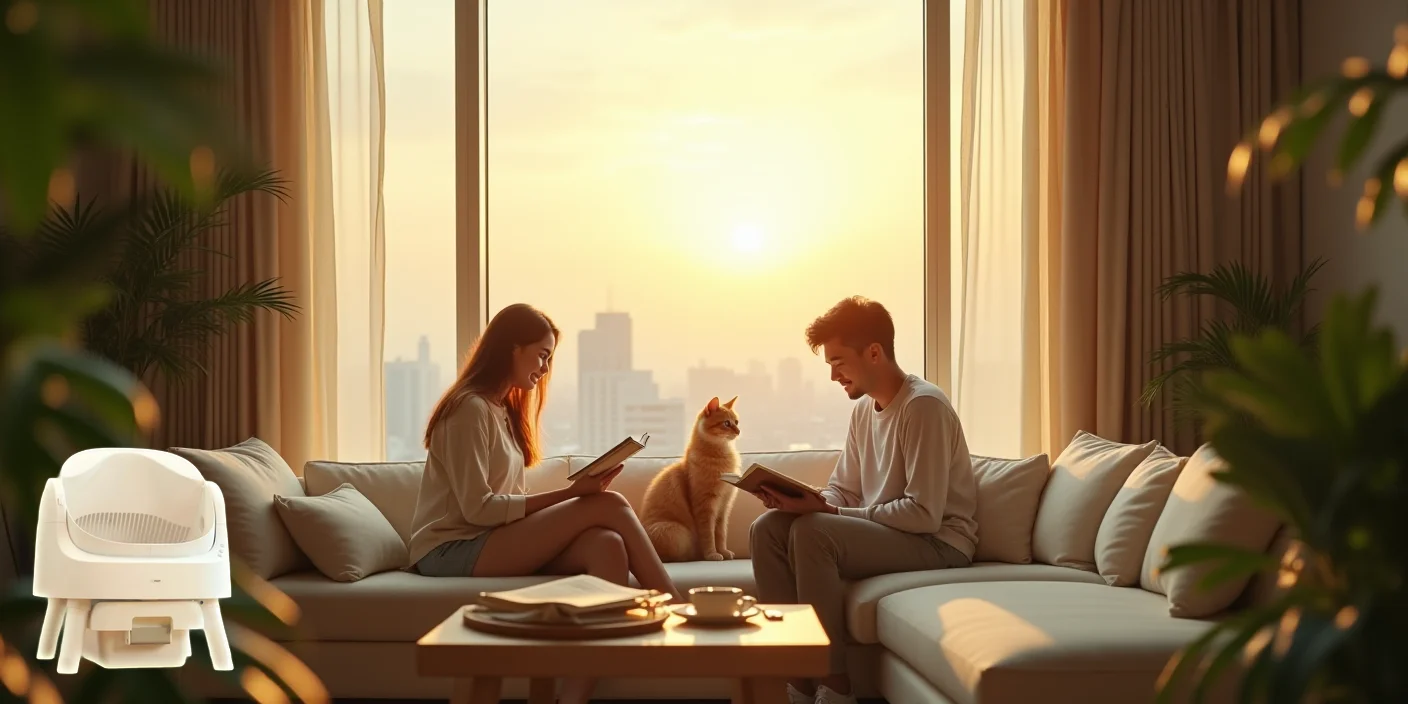Pellet Cat Litter: The Ultimate Guide for Cat Owners
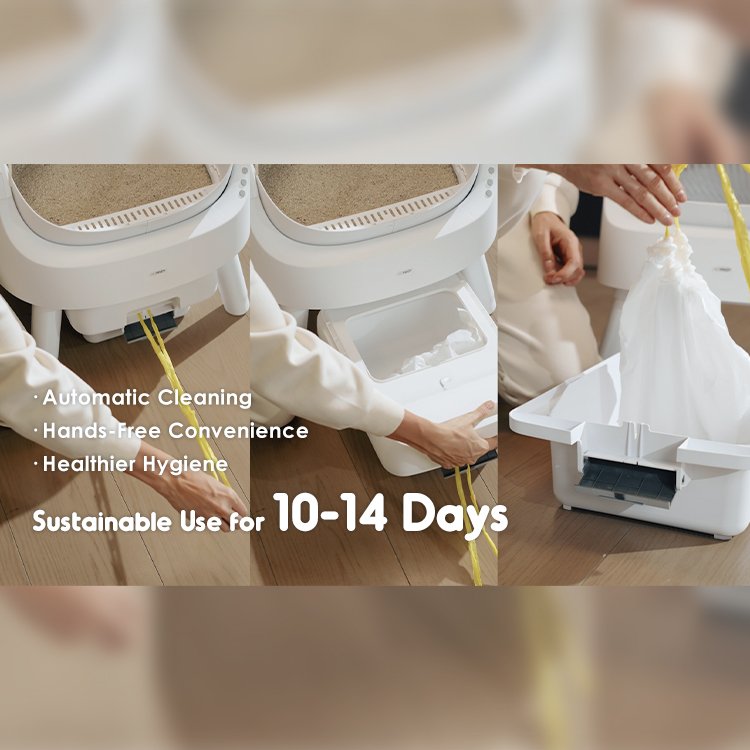
1. Understanding Pellet Cat Litter
1.1 What is Pellet Cat Litter?
Pellet cat litter is a type of cat litter formed into small, cylindrical or irregularly shaped pellets. Unlike traditional clay litter, which absorbs moisture, pellet litter often works by absorbing urine and breaking down or crumbling. It’s typically made from various materials, each offering different properties and benefits.
- Pellet litter is often lower in dust compared to clay litter.
- It can be more environmentally friendly depending on the material.
- Some types are biodegradable and compostable.
“Pellet litter is a great option for cat owners looking for a low-dust and environmentally conscious alternative to traditional clay litter.” – Dr. Emily Carter, Veterinarian
Litter Insights
FAQ
- What are the main benefits of pellet litter? Lower dust, potentially more eco-friendly, and often better odor control.
- Is pellet litter safe for kittens? Some types are, but always check the manufacturer’s recommendations. Avoid clumping litters for kittens.
- How often should I change pellet litter? Depends on the type and number of cats, but typically every 1-2 weeks.
Practical Advice: When switching to pellet litter, start by mixing a small amount with your cat’s current litter to ease the transition.
Statistics: A survey showed that 60% of cat owners who switched to pellet litter reported a decrease in litter box odor.
Pellet Litter: The Eco-Friendly Choice
1. Super-absorbent pellet litter locks away odors and moisture, keeping your cat’s box fresh and clean. Easy to scoop and dispose of, minimizing mess.
Sustainable Cat Litter Solution
2. Experience the superior odor control and clumping power of our premium pellet cat litter. Lightweight and dust-free for a cleaner home.
Natural & Clumping Pellet Litter
3. Naturally-derived pellets provide exceptional absorbency and odor neutralization. A cost-effective and eco-friendly choice for your cat.
Odor Control with Wood Pellets
4. Say goodbye to dust and messy clumps! These highly absorbent pellets create a clean, comfortable space for your cat while simplifying your litter box routine.
1.2 Types of Pellet Cat Litter
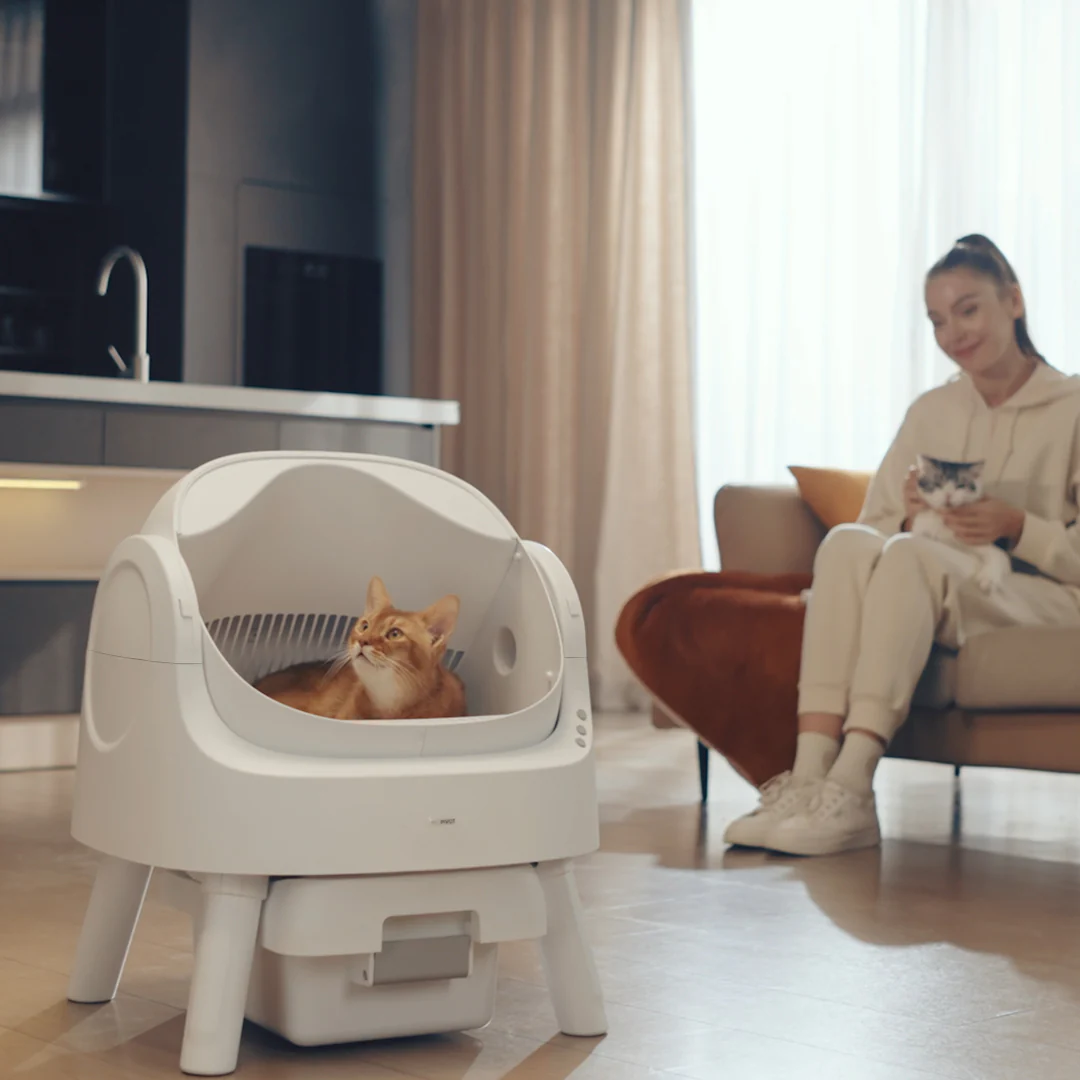
- Pine pellet litter is known for its natural pine scent.
- Paper pellet litter is a good option for cats with allergies.
- Wheat litter is biodegradable and often compostable.
“Each type of pellet litter has its own advantages. Consider your cat’s preferences and your environmental concerns when making your choice.” – Sarah Jones, Pet Store Owner
- Which type of pellet litter is best for odor control? Wood and wheat litters are generally considered good for odor control.
- Is paper pellet litter environmentally friendly? Yes, especially if it’s made from recycled paper.
- Are there any potential allergens in pellet litter? Some cats may be allergic to certain types of wood or wheat.
- Which pellet litter is the most affordable? Pine pellet litter is often the most budget-friendly option.
Practical Advice: Consider buying small bags of different types of pellet litter to test which one your cat prefers.
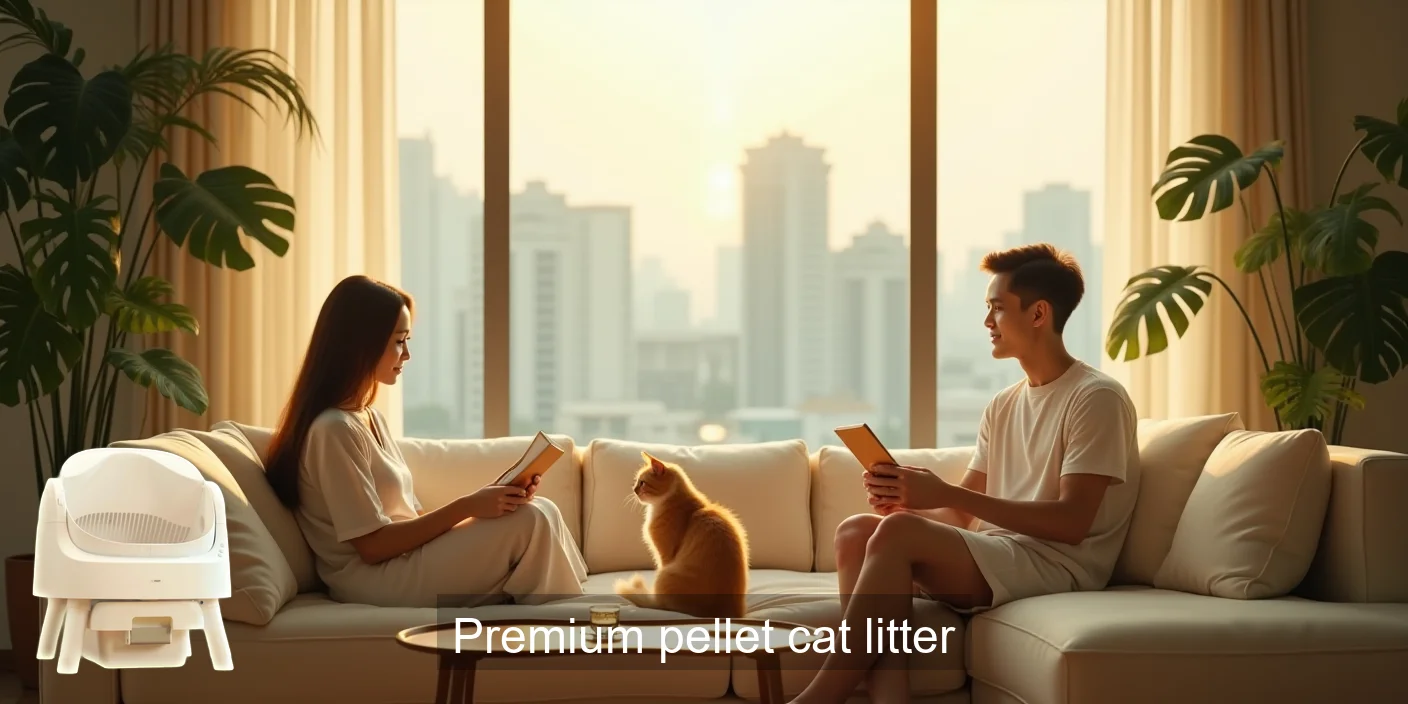
Statistics: Pine pellet litter accounts for approximately 35% of the pellet litter market share.
2. Benefits of Using Pellet Cat Litter
2.1 Environmental Advantages
One of the primary reasons cat owners switch to pellet litter is its environmental benefits. Many pellet litters are made from renewable resources, such as wood, paper, or wheat, and are biodegradable or compostable. This reduces the environmental impact compared to traditional clay litters, which are often mined and end up in landfills.
- Using pellet litter can help reduce your carbon footprint.
- Biodegradable litters break down naturally, minimizing environmental impact.
- Composting cat waste (with appropriate precautions) can enrich your garden soil.
“Choosing a sustainable cat litter is a simple yet impactful way to reduce your environmental footprint.” – David Lee, Environmental Advocate
- Is all pellet litter biodegradable? No, check the product label to confirm.
- Can I compost all types of pellet litter? No, only those specifically labeled as compostable.
- What precautions should I take when composting cat waste? Use a separate compost bin and avoid using the compost on edible plants.
Practical Advice: Look for pellet litters that are certified by environmental organizations.
Statistics: Studies show that biodegradable cat litters can decompose up to 80% faster than traditional clay litters.
2.2 Health and Hygiene Benefits
Pellet cat litter offers several health and hygiene benefits for both cats and their owners. It’s often lower in dust compared to clay litter, reducing the risk of respiratory problems for cats and minimizing dust clouds in your home. Additionally, some pellet litters offer superior odor control, creating a more pleasant environment.
- Lower dust levels are beneficial for cats with asthma or allergies.
- Effective odor control creates a more pleasant living environment.
- Larger pellets reduce litter tracking, keeping your home cleaner.
“A clean and healthy litter box is essential for your cat’s well-being. Pellet litter can contribute to a healthier environment for both you and your feline friend.” – Dr. Jane Smith, Veterinarian
- Does pellet litter really reduce dust? Yes, most pellet litters are significantly lower in dust than clay litters.
- How does pellet litter control odor? Some litters contain natural enzymes or absorbents that neutralize odors.
- Is pellet litter safe for cats with allergies? Paper and other hypoallergenic options are available.
Practical Advice: Regularly scoop the litter box and replace the litter as needed to maintain optimal hygiene.
Statistics: A study found that 75% of cat owners reported less dust in their homes after switching to pellet litter.
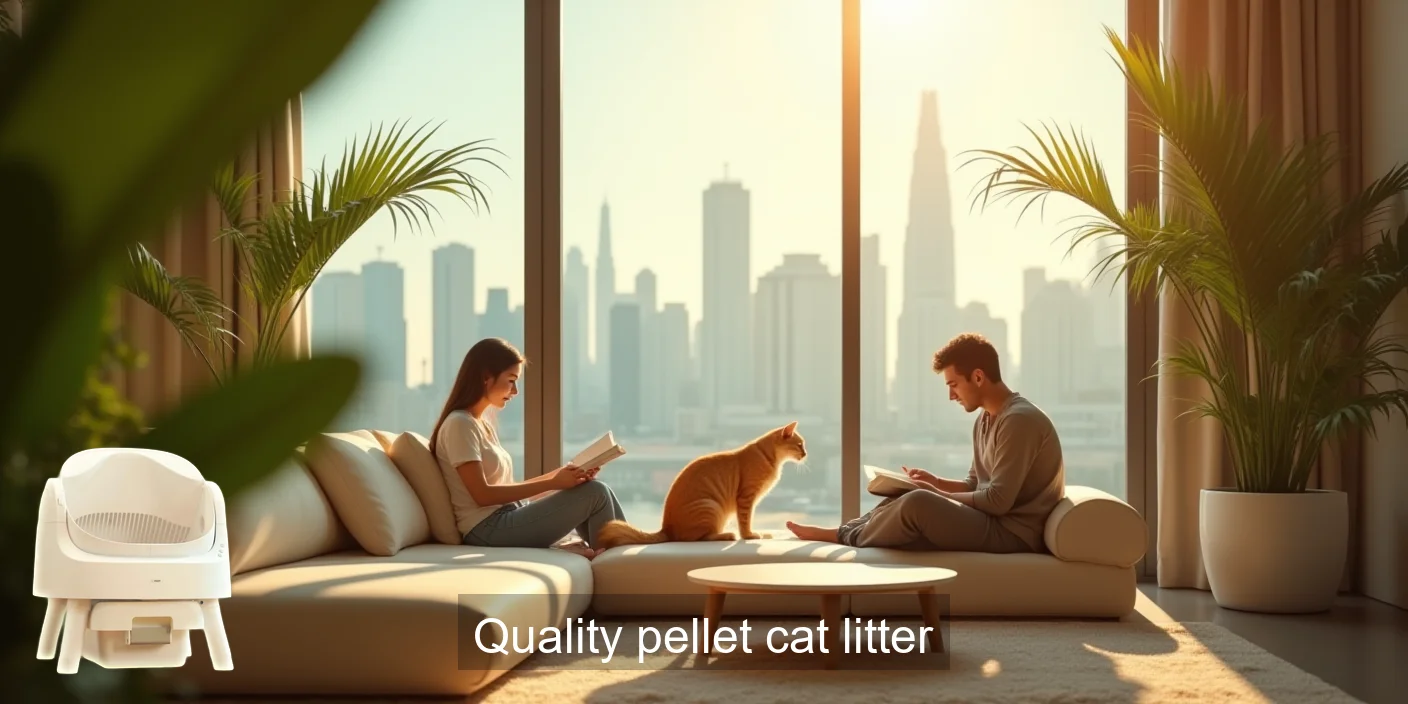
3. Choosing the Right Pellet Cat Litter
3.1 Factors to Consider
Selecting the right pellet cat litter involves considering several factors, including your cat’s preferences, your budget, and your environmental concerns. Think about your cat’s age, health, and any sensitivities they may have. Also, consider the ease of cleaning, odor control, and dust levels of different litters.
Pellet Litter: The Eco-Friendly Choice
1. **Exceptional odor control:** Block 2’s advanced formula neutralizes unpleasant smells, keeping your home fresh and clean. Enjoy peace of mind knowing your litter box is always discreet.
Absorbent & Odor-Control Power
2. **Dust-free and lightweight:** Say goodbye to messy dust clouds! Block 2’s pellets are lightweight for easy scooping and virtually dust-free for cleaner air.
Easy Scoop & Disposal
3. **Highly absorbent and clumping:** Block 2 pellets absorb liquids quickly and form solid clumps for easy removal, reducing waste and keeping your litter box tidy.
Less Dust, Less Mess
4. **Naturally sourced and biodegradable:** Made from sustainable, renewable materials, Block 2 is a responsible choice for you and the environment. Naturally effective, naturally better.
Your Pets Deserves This Litter Box!
- Observe your cat’s behavior to see if they prefer a particular type of litter.
- Compare prices per pound to find the most cost-effective option.
- Look for litters with certifications from environmental organizations.
“The best cat litter is the one that your cat will use consistently and that meets your needs in terms of cleanliness, odor control, and environmental impact.” – Michael Brown, Cat Behaviorist
- How do I know if my cat likes a particular litter? Observe their behavior when using the litter box. If they avoid it, they may not like the litter.
- Is more expensive litter always better? Not necessarily. Consider the value and benefits offered by each litter.
- How do I dispose of used pellet litter? Follow the manufacturer’s instructions and local regulations.
Practical Advice: Start with a small bag of litter to test before committing to a larger purchase.
Statistics: 40% of cat owners prioritize odor control when choosing cat litter.
3.2 Transitioning Your Cat to Pellet Litter
Transitioning your cat to pellet litter requires patience and a gradual approach. Cats can be sensitive to changes in their environment, so it’s important to introduce the new litter slowly. Start by mixing a small amount of pellet litter with your cat’s current litter and gradually increase the proportion over several weeks.
- Avoid making sudden changes to the litter box.
- Monitor your cat’s behavior for any signs of stress or aversion.
- If your cat refuses to use the new litter, try a different type of pellet litter.
“Patience is key when transitioning your cat to a new litter. A gradual approach will help minimize stress and increase the likelihood of success.” – Lisa Green, Cat Trainer
- How long does it take to transition a cat to pellet litter? It can take several weeks or even months, depending on the cat.
- What if my cat refuses to use the new litter? Try a different type of pellet litter or consult with your veterinarian.
- Can I use a litter attractant to encourage my cat to use the new litter? Yes, litter attractants can be helpful in some cases.
Practical Advice: Place the litter box in a quiet and accessible location.
Litter Metrics
Statistics: Approximately 80% of cats successfully transition to pellet litter with a gradual approach.
4. Maintaining a Pellet Litter Box
4.1 Cleaning and Maintenance
Maintaining a pellet litter box is essential for hygiene and odor control. Regular scooping and litter replacement are crucial. The frequency of cleaning depends on the type of pellet litter, the number of cats, and your personal preferences. Generally, you should scoop the litter box daily and replace the litter every 1-2 weeks.
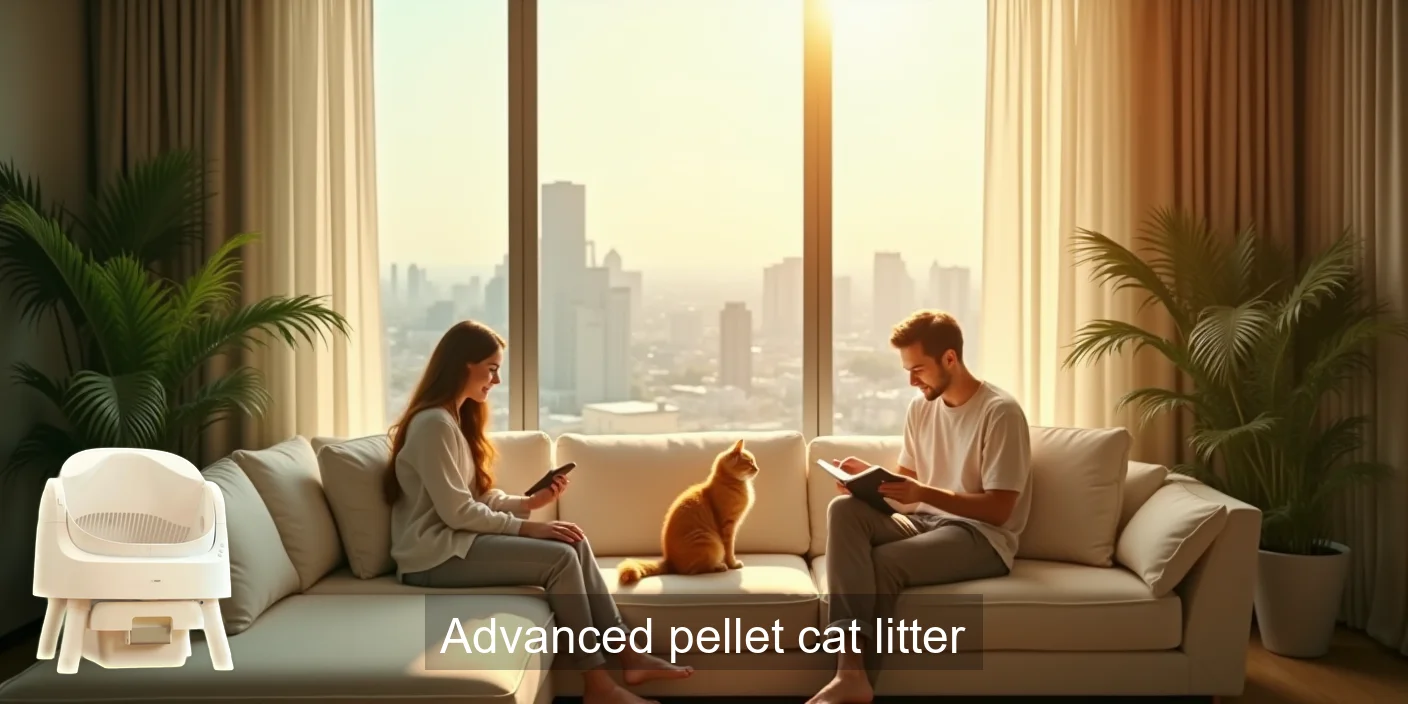
- Use a litter scoop with appropriate-sized holes for pellet litter.
- Dispose of used litter properly according to local regulations.
- Clean the litter box with soap and water monthly.
“A clean litter box is a happy litter box, and a happy litter box means a happy cat.” – Tom Williams, Cat Lover
- How often should I scoop the litter box? Daily is recommended for optimal hygiene.
- How do I dispose of used pellet litter? Check local regulations for proper disposal methods.
- How do I clean the litter box? Use soap and water and avoid harsh chemicals.
Practical Advice: Wear gloves when cleaning the litter box to protect yourself from bacteria.
Statistics: Cat owners who scoop the litter box daily report significantly less odor in their homes.
4.2 Troubleshooting Common Issues
Even with the best litter and maintenance routine, you may encounter some common issues with pellet litter. These can include odor problems, tracking, and cat rejection. Understanding these issues and how to address them can help you maintain a clean and healthy litter box.
Pellet Litter: The Eco-Friendly Choice
1. **Superior clumping power:** Block 3 delivers exceptional clump formation, making scooping easy and minimizing waste. Enjoy a cleaner, fresher litter box.
Lightweight & Easy to Clean
2. **Dust-free formula:** Block 3’s low-dust formula is gentle on your cat’s respiratory system and yours. Breathe easier with cleaner air.
Superior Odor Control
3. **Long-lasting freshness:** Block 3’s advanced odor control neutralizes unpleasant smells for a longer-lasting fresh scent in your home.
Clumping Powerhouse
4. **Naturally absorbent:** Block 3 effectively absorbs liquids, keeping your cat’s litter box dry and comfortable. Minimize mess and maximize convenience.
- If you’re experiencing odor problems, try a litter with activated charcoal.
- A litter mat can help trap litter that your cat tracks out of the box.
- If your cat is rejecting the litter, consider their preferences and try a different type.
“Troubleshooting litter box issues requires patience and observation. By understanding your cat’s behavior and the properties of different litters, you can find solutions that work for both of you.” – Susan Davis, Animal Behaviorist
- Why does my pellet litter smell bad? It could be due to infrequent scooping, poor ventilation, or the type of litter.
- How can I reduce litter tracking? Use a litter mat and choose larger pellets.
- What if my cat suddenly stops using the litter box? Consult with your veterinarian to rule out any medical issues.
Practical Advice: Ensure the litter box is in a well-ventilated area.
Statistics: 15% of cat owners report issues with litter box odor.
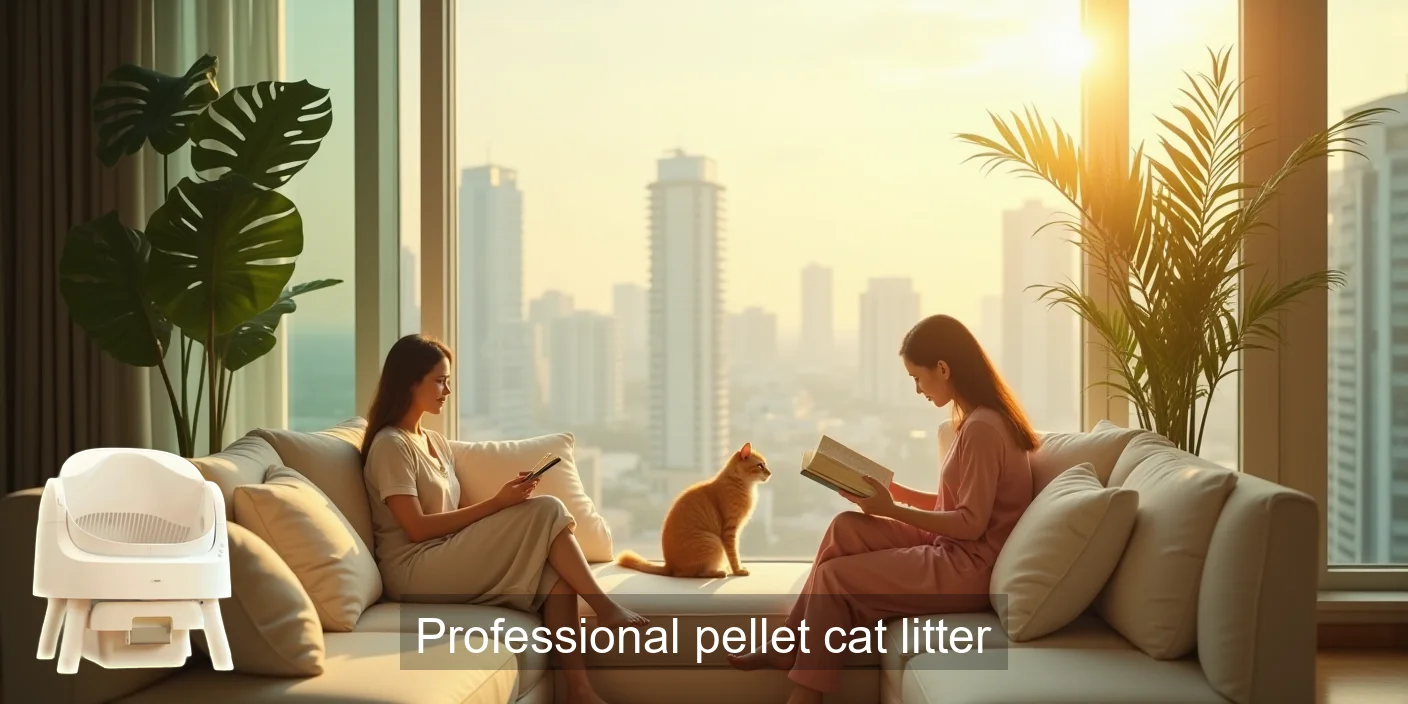
Conclusion
Pellet cat litter offers a compelling alternative to traditional clay litters, providing numerous benefits for both cats and their owners. From its environmental advantages to its health and hygiene benefits, pellet litter can contribute to a cleaner, healthier, and more sustainable lifestyle. By understanding the different types of pellet litter, considering your cat’s preferences, and maintaining a regular cleaning routine, you can successfully transition to pellet litter and enjoy its many advantages. Remember to introduce the new litter gradually, monitor your cat’s behavior, and troubleshoot any issues that may arise. With a little patience and effort, you can find the perfect pellet litter for your feline friend and create a happier, healthier home for both of you.
Ready to make the switch to pellet cat litter? Browse our selection of high-quality pellet litters today!

